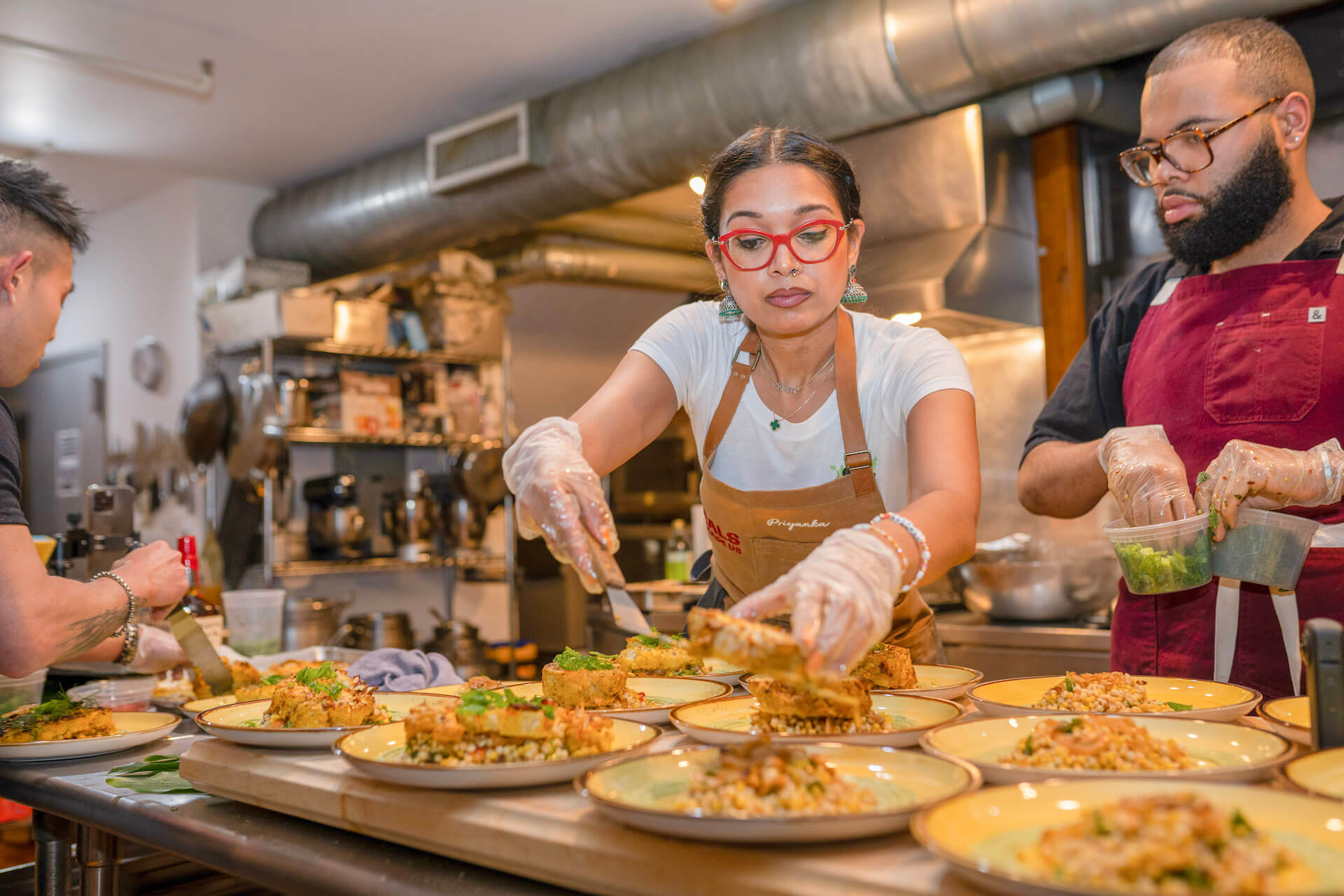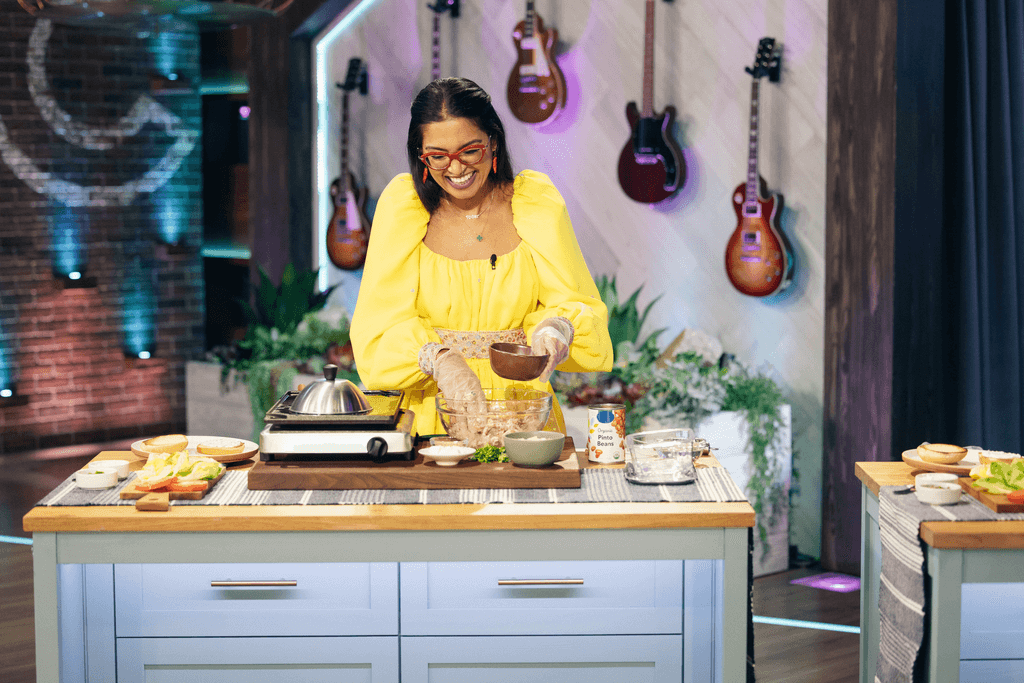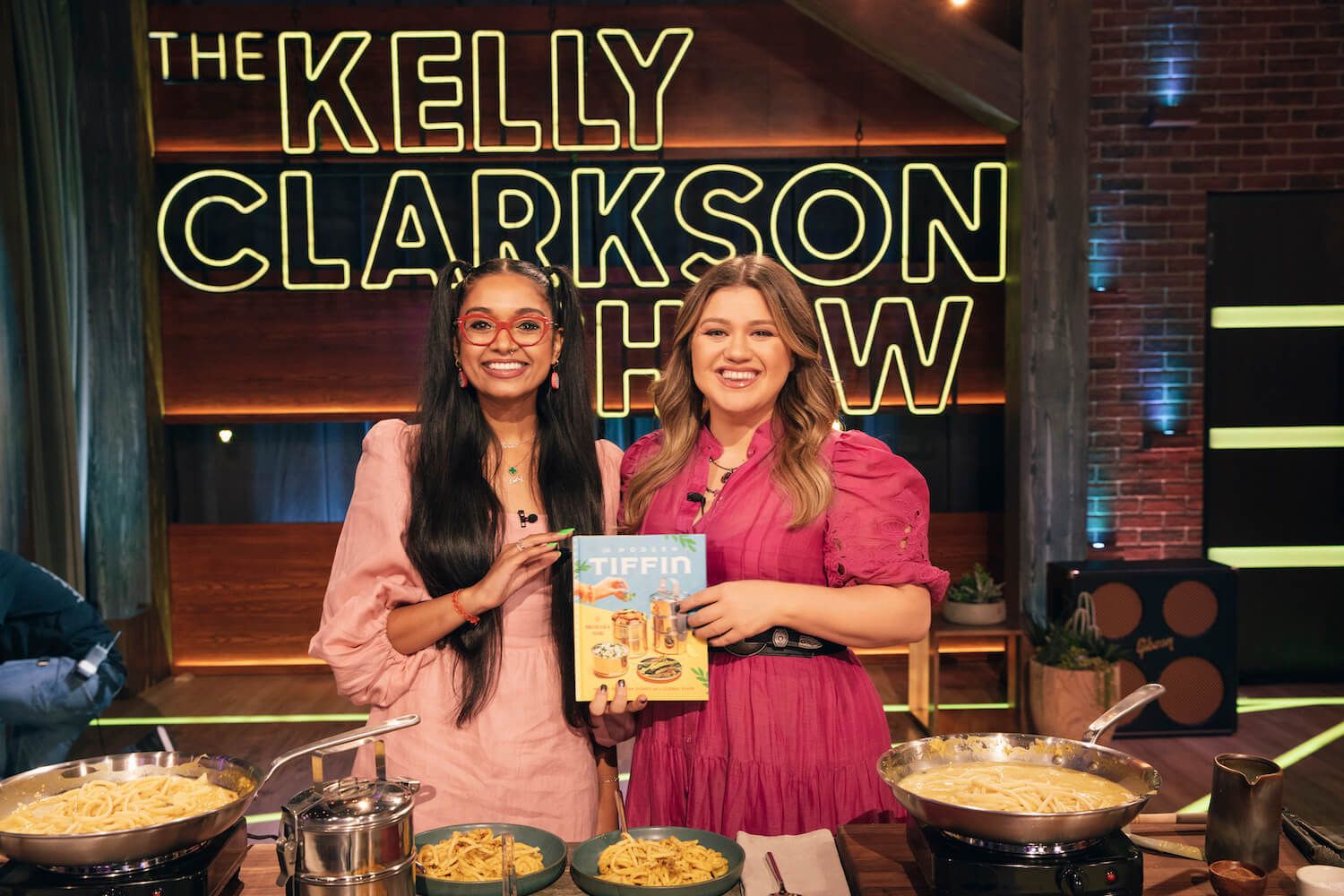Big Flavors, Small Footprint: Eco-cooking Chef Priyanka
“For me, the food that I serve is a direct reflection of who I am.”
Chef, author, TV host—
”I’m also a world traveler!” adds Priyanka Naik during our interview. Easily recognized for her bright red specs and colorful fashion, Naik is a woman of many talents, and indeed of many countries. She’s traveled to forty-three at time of publishing, and their fingerprints are all over her cooking.
“Because I’m so curious about how other cultures cook and what they eat, a lot of the dishes that I cook are a culmination of cultures, with elements from multiple countries. Like, I’ll make a banh mi, which is Vietnamese (with French influence, actually), but I will make it a tamarind tofu banh mi so there is an Indian element and prep to it. And that to me is a reflection of who I am on the plate.”
And there’s no getting around who she is: a proud New Yorker of Maharashtrian descent. “I was fortunate enough to grow up in New York City, and that’s a lot of where the curiosity started—at home. Oh, we tried this new Sri Lankan restaurant that opened up. Or oh, there’s this new dry pot restaurant down the street.”

Photo courtesy of Priyanka Naik
“Food is the closest way you can get in touch with another culture outside of your own home.”
But while other cultures may interest her, at the end of the day, her own heritage is the common thread that runs throughout: all the global fusion recipes in her cookbook The Modern Tiffin have an Indian twist to them, from chutney quesadillas to cardamom sweet tea. “There’s a cultural component as a first generation Indian American: food is the way that we stay in touch with our culture. It’s how you learn about your roots. We as a people, Indian people, are just so hyper-focused on food. It’s the most important part of the day, so I love being part of a culture where that is the biggest thing. It’s where I learned a lot of my first words when I was a child, and I think there’s a lot of power to that.“
Chef Priyanka’s childhood was more or less vegan, but by happy accident. “A lot of the dishes we made were vegan; we just never called them vegan! We [Maharashtrians] eat so many varieties of vegetables and legumes and greens. The idea of having a big chunk of meat in the center of the plate just did not exist for us growing up.
In school we were taught that a ‘balanced meal’ was a three-segmented plate: an animal protein at the center, a carb on the side, and a vegetable on the side. That’s what they deemed a proper plate of food, but I certainly did not grow up like that! Indian people don’t generally eat like that, and honestly, a lot of cultures around the world don’t eat like that. Usually the way the food is served is family style, with many different components on the table, so the idea of this segmented plate was honestly very bizarre. Seeing that in school, we were just like, ‘Okay, well, we never eat like that,’ and completely disregarded it.”
To young Priyanka, plant-based was normal, and meat-centric eating was weird. Despite what she saw in advertisements or learned in health class, her food norms were flipped in favor of plants, and that dissonance with American food culture is precisely why she’s a self-trained chef: culinary schools told her she’d have to butcher, cook, and eat animals as part of the coursework. It’s a fundamental part of cooking, they told her. Add to that the knowledge that culinary schools devote hardly any time to Asian cuisine (instead favoring European traditions), and she knew it wasn’t the right fit. She’d have to forge her own path.

Photo courtesy of Priyanka Naik
From this mindset sprang everything else she’s now known for: the low-waste cooking, the plant-based cooking, the eco-fashion, the adventurous culinary fusions. It’s all connected in her eyes.
“Food’s environmental impact is due mainly to factory farming, which is tied to overproduction and consumption habits, a lot of which is Western-led. So from that standpoint, the eco-living—being more thoughtful about how I live—was an offshoot of the vegan lifestyle. There’s no way you can have one without the other.”
Recipe by recipe, Naik is working to upend people’s approach to cooking and show them there’s a greener way. Featured in outlets spanning from Glamour to Forbes, Chef Priyanka has showcased fun plant-based recipes on talk shows and taught countless Americans how to cook with scraps. “Again, this goes back to my culture: I grew up seeing us cooking with watermelon rinds and mango peels and other things that would be normally deemed trash but is actually food. I was always conscious about it, but it started more seriously for me during the pandemic. Many times if I’d cook or develop recipes or order food, I’d be stuck with leftovers, so I challenged myself to see what I could do with those.
I’m proud of the way I’ve been able to flip people’s perspective in a way where leftover rice or leftover pasta is no longer the unwanted stepchild. It’s literally a golden ticket to a whole new recipe. And, you know, I’ve taken that to so many new heights: I’ve made low-waste recipes with Kelly on the Kelly Clarkson Show, I’ve done it on the Today Show multiple times, I did a TEDx talk on it. I didn’t think it would get that big, but now so many other chefs are doing it.”

Photo courtesy of Priyanka Naik
And it’s not just cooking. What we buy, what we wear, how we dine—Naik believes all of that is a way for us to do better for the environment. “One of the top contributors to emissions and waste is the clothing industry. As someone who loves fashion and has a very particular style, I thought, ‘I can do something about this too! I can be more thoughtful about what I buy, where I buy it, what type of material it’s made from.’ Or, you know, asking whether I should buy it in the first place—using what I already have versus trying to constantly get new stuff. I can be more thoughtful about how I get rid of my clothing. How can I resell it? How can I work with it, or do clothing swaps with my friends?
If someone wants to really flip their lifestyle on its head, I would say start with your mindset. I think that you can’t do anything unless you truly believe in the mission, feel like you can make a difference, and have an open mind. Keep an open mind to saying, ‘I don’t need to eat in a three-segmented plate approach. My food can look like many dishes, and it could be from any part of the world. I can eat family style, or I can cook for myself and make sure that I portion the amount I’m making just for myself.’ I think the mind is truly where it starts and it’s very difficult to do if you’re being told to do it versus if you want to do it.”
Her advice for those just starting out? Take a bite. Start small, but start somewhere! Try a new plant-based recipe that sounds intriguing. Challenge yourself to use the entire broccoli, stem and all. See if you like the new Vietnamese spot down the street. Have an open mind, and explore food’s possibilities. Sample the flavors of the world—you just might find what you like.